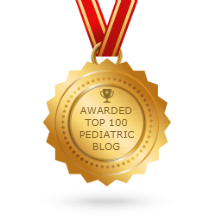© 2020 Roy Benaroch, MD
These are difficult times, and there’s a lot of uncertainty about what will happen next. When will our kids go back to school, and when will parents be able to return to their routines? There’s a lot we don’t know, But there are things you can do now to help you and your children stay well while staying at home.
Stay with a routine. Get up and go to bed at reasonable times, and block out time for school, play, and meals.
Get outside. We all need to avoid crowds, but that doesn’t mean you and your kids must stay indoors. Go for a bike ride. Draw a colossal, life-sized squid on the cul-de-sac. Take your dog for a walk. Everyone needs movement and exercise, every day. It doesn’t have to be in a gym.
Play with your kids. Foosball, Super Mario World on an old SNES, ping pong, Gin Rummy. Or make a game – create an obstacle course, or use paper towel rolls taped to the wall to create a ball-maze. Draw and dance and create together.
Connect with friends and relatives with Zoom, Facetime, or whatever. We’re supposed to be physically distant, but we’ve got the technology to stay socially together. Not ideal, but better than nothing!
Be gentle, and be kind – with yourself, with your kids, and with everyone else you meet. We’re stressed and life is strange, and that doesn’t always bring out the best in ourselves or our neighbors. Pay back negativity with kindness; or if that doesn’t work, ignore it. We all need more humor and positive vibes these days. If you or your kids aren’t getting that from certain friends, it’s time to “mute” them. (The friends, not your kids.)
Lower your expectations. You probably didn’t sign up to home-school your kids, and you’re maybe not going to be able to sustain the kind of job you wished you could do. (Hey, maybe we’ll all learn to appreciate our kids’ teachers more!) You may be discouraged that there’s a pile of laundry, or that you’re not getting enough stuff done every day. This is a whole new ball game, and failing at your expectations probably means your expectations were off-base – not that you’re a failure.
Help people. You’ll feel better (and you’ll set a great example for your kids) if you do simple things to help your neighbors. Send post cards. Deliver cookies (leave them at my door!) Offer to pick up someone’s medicine, or make a huge batch of chili to share. Look out for examples of people helping people – there are thousands of these stories on social media every day, though sometimes they’re lost in the clutter.
Speaking of social media: it’s a great way to connect and get news, but you’ve got to turn in off sometimes. There’s too much bad news, incorrect news, and hysteria to stomach for long. Consider putting guard rails up for yourself and your children – only, say, 1 hour of Facebook, once a day, then you are done. When you do post and share, post reliable things from credible sources. Even better, share silly things that will make your kids and your friends laugh.
Things will get better. In the meantime, we can make the best of our shut-in time. And, by the way, my favorite cookies are chocolate chip.
























Recent Comments